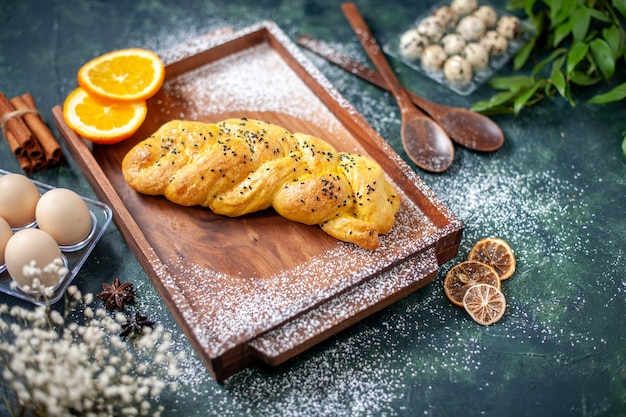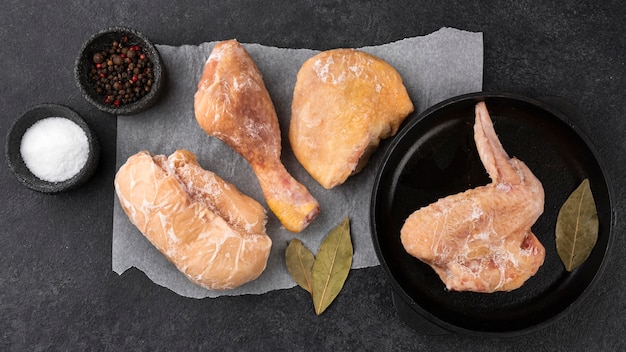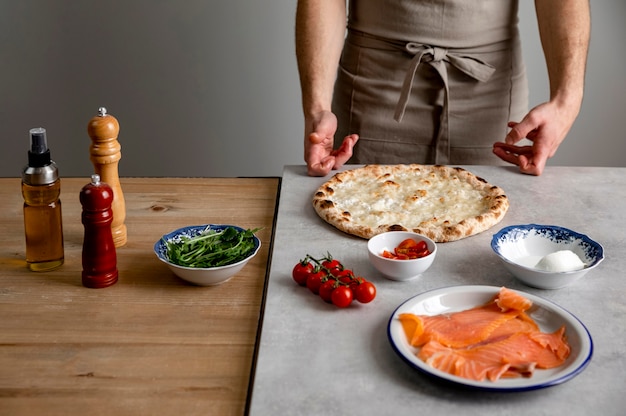Right, you’ve got a couple of chicken breasts in the fridge and you're ready to whip up a delicious meal. But how long do you cook them for? Well, let’s dive into the world of chicken breast cooking! I’ve been cooking chicken breasts for years now, and I’ve learned a thing or two about how to get them perfectly cooked, every time. This isn't just a list of timings, it's a complete guide to understanding the ins and outs of cooking chicken breast, covering everything from picking the right cut to mastering different cooking methods. We'll even explore some creative recipes to spice things up!
Part 1: Picking the perfect chicken Breasts

The Anatomy of a Chicken Breast
Before you even think about cooking, you need to choose the right chicken breasts for the job. They come in various forms: bone-in or boneless, skin-on or skin-off, and in different sizes. Personally, I prefer boneless, skinless chicken breasts because they’re incredibly versatile and easy to cook. But, if you’re going for a more rustic dish, bone-in breasts with the skin on can add a lovely flavour and a bit of extra juiciness.
Quality Control: Choosing the Best
When you’re choosing your chicken, it's essential to make sure it's fresh and of good quality. Look for plump, firm breasts that are free of bruising or discoloration. The colour should be a healthy, pale pink. Avoid chicken with any greenish or yellowish hues, which might indicate spoilage. Remember, always buy your chicken from a reputable source to ensure it's been handled safely.
Size Matters: The Impact on Cooking Time
The size of the chicken breast directly affects your cooking time. Larger breasts take longer to cook than smaller ones. If you're working with thicker, larger breasts, you'll need to adjust your cooking times accordingly. We'll go into more detail about timing later on.
Part 2: Understanding Cooking Methods

Baking for Even Cooking
baking chicken breasts is a great way to cook them evenly. Preheat your oven to 375°F (190°C) and place the breasts in a baking dish. I like to season them generously with salt, pepper, and some herbs before baking. I find that a simple mix of dried rosemary, thyme, and oregano works wonderfully. A good rule of thumb is to bake for about 20-25 minutes, or until a meat thermometer inserted into the thickest part of the breast registers 165°F (74°C).
Pan-Frying for quick and easy meals
Pan-frying is a quick and easy way to cook chicken breasts, perfect for busy weeknights. Heat some oil in a pan over medium-high heat. I use olive oil for its flavour and health benefits. Season your breasts with salt and pepper, then add them to the pan. Cook for about 3-5 minutes per side, or until golden brown and cooked through. Don’t overcrowd the pan; if necessary, cook them in batches to ensure they brown evenly.
Grilling for Smoky Flavour
grilling chicken breasts adds a delicious smoky flavour, perfect for summer barbecues. Preheat your grill to medium heat. Season the breasts with salt, pepper, and any other desired spices. Grill for about 4-6 minutes per side, or until cooked through. Remember to use a grill brush to clean the grates before cooking.
Boiling for Soups and Stews
If you're making a soup or stew, you might need to boil your chicken breasts. Place them in a pot of boiling water and simmer for about 15-20 minutes, or until cooked through. Boiling is a great way to extract flavour from the chicken for soups and stocks.
Part 3: The Importance of Temperature: Ensuring food safety

Don't Forget the Thermometer
Here’s where I get really particular. I always use a meat thermometer to make sure my chicken breasts are cooked to perfection. This is the only way to guarantee that they’re safe to eat. The USDA recommends cooking chicken breasts to an internal temperature of 165°F (74°C).
Visual Clues: Signs of Doneness
If you don't have a thermometer, you can also look for visual clues. The chicken should be opaque and white throughout, with no pink showing. The juices should run clear, not pink. And the chicken should be firm to the touch. However, relying solely on visual cues can be unreliable, so a meat thermometer is always the safest option.
Overcooking: The Enemy of juicy chicken
overcooked chicken breasts can be dry and tough. This is something I’ve learned the hard way. So, make sure to take them off the heat as soon as they reach the recommended temperature. Don’t worry about slightly undercooked chicken - it's better to err on the side of caution than risk drying it out.
Part 4: Understanding the Timing
Factors Influencing Cooking Time
Remember, the exact cooking time for chicken breasts can vary depending on a few factors, including:
- Size of the breast: Larger breasts will take longer to cook. Remember, we're talking about thicker breasts, not just longer breasts.
- Thickness of the breast: Thicker breasts will take longer to cook than thinner ones. This is where pounding your chicken can be useful!
- Cooking method: Different cooking methods have different cooking times. Baking takes longer than pan-frying, for example.
- Temperature of the heat source: A higher heat will cook the chicken faster. This is why it's important to preheat your oven and make sure your pan is hot enough before you start cooking.
- Altitude: Cooking at higher altitudes can affect cooking times. Air pressure is lower at higher altitudes, which can affect boiling points and overall cooking time. You might need to adjust cooking times slightly if you live at a high elevation.
General Cooking Times: A Guide for Your Kitchen
Here’s a quick table that gives you a general idea of how long to cook chicken breasts for:
| Cooking Method | Cooking Time |
|---|---|
| Baking | 20-25 minutes at 375°F (190°C) |
| Pan-frying | 3-5 minutes per side over medium-high heat |
| Grilling | 4-6 minutes per side over medium heat |
| Boiling | 15-20 minutes in boiling water |
Important Note:
These are just general guidelines. Always check the chicken's internal temperature to ensure it's cooked through.
Part 5: Achieving Perfect Texture
Tenderness Matters: The Key to delicious chicken
One of the biggest challenges with cooking chicken breasts is getting them to be juicy and tender. No one likes dry chicken, right? Here are a few tips to help you achieve that perfect texture:
- Don't overcook: This is the number one culprit for dry chicken breasts. Make sure to pull them off the heat as soon as they’re done. Using a meat thermometer helps you avoid overcooking.
- Use a marinade: A good marinade can help to tenderize the chicken and add flavour. It works by breaking down the proteins in the chicken, making it more tender. You can use a simple marinade of olive oil, lemon juice, and herbs, or get more adventurous with a soy sauce-based marinade with ginger and garlic.
- Pound the breasts: If you have thick chicken breasts, you can pound them to even out the thickness and help them cook more evenly. Just be careful not to pound them too thin! Use a meat mallet or the flat side of a heavy pan.
Brining: The Ultimate Juiciness Hack
Here’s a little trick I’ve learned. Brining your chicken breasts can make them incredibly tender and juicy. It involves soaking them in a salt water solution for a few hours. The salt helps to draw moisture into the chicken, making it more flavorful and preventing dryness. To brine chicken breasts, combine 1 cup of salt with 1 gallon of water. Submerge the chicken breasts in the brine for 2-4 hours.
Part 6: Unleashing Your Flavor Potential
Seasoning with Flair: Simple and Complex
Now, let’s talk about making your chicken breasts taste amazing. There are endless possibilities for seasoning, and I love experimenting with different flavor combinations.
- Simple and Classic: Salt, pepper, and garlic powder are always a good starting point. I always use fresh cracked pepper for a more intense flavour profile. Don't be afraid to season generously!
- Herbs and Spices: Get creative with herbs like rosemary, thyme, oregano, and basil, or spices like paprika, cumin, and chili powder. My personal favourite is a mix of oregano and paprika for a slightly smoky flavour.
- Citrus Burst: Lemon zest, lime juice, or orange zest can add a vibrant zing to your chicken. A squeeze of fresh lemon juice before serving can also elevate the dish.
- Sweet and Savoury: A touch of honey or maple syrup can add a lovely sweetness to your chicken. I like to combine it with soy sauce for a sweet and salty glaze.
The Art of Marinades: Infusing Flavour and Tenderness
Marinades are a great way to infuse your chicken with flavour and keep it moist. They typically contain an acid, like lemon juice or vinegar, and oil to help keep the chicken tender. I love using marinades with soy sauce, ginger, garlic, and a touch of honey for a delicious Asian-inspired flavour.
Part 7: Creative chicken breast recipes
Chicken Breast Transformations: Beyond the Basics
Okay, so now that you’ve got the basics down, let’s explore some exciting ways to cook chicken breast.
- Chicken Stir-Fry: This is a quick and easy dish perfect for a weeknight meal. Cut the chicken breasts into bite-sized pieces and stir-fry them with your favourite vegetables and sauce. I like to use a combination of soy sauce, ginger, garlic, and a touch of honey. Serve it over rice or noodles.
- Chicken Caesar Salad: A classic for a reason! Grill or pan-fry your chicken breasts and serve them on a bed of romaine lettuce with a creamy Caesar dressing, Parmesan cheese, and croutons. You can add some chopped tomatoes and cucumbers for extra freshness.
- Chicken Parmesan: This Italian classic is a crowd-pleaser. Bake or pan-fry your chicken breasts, then top them with marinara sauce, mozzarella cheese, and Parmesan cheese. Bake until the cheese is bubbly and golden brown. Serve with a side of pasta.
- Chicken Curry: This is a great option for a flavour-packed meal. You can make a simple curry with coconut milk, curry powder, and your favourite vegetables, or get adventurous with a more complex recipe. I love to add a touch of lemon juice and cilantro for a fresh finish. Serve it with rice or naan bread.
- Chicken Fajitas: Perfect for a fun and interactive meal. Marinate your chicken breasts in a combination of fajita seasoning, lime juice, and olive oil. Then grill or pan-fry them and serve them with warm tortillas, bell peppers, onions, and your favourite toppings.
The Possibilities are Endless: Experiment and Explore
The beauty of chicken breast is that it’s so versatile. You can use it in almost any dish, from simple weeknight meals to fancy dinners. Don’t be afraid to experiment with different flavours and cooking methods. There's a whole world of chicken breast possibilities waiting to be discovered!
Part 8: Storing and Leftovers
Storing for Freshness: Keeping Chicken Safe
Proper storage is key to keeping your chicken breasts fresh and safe. Keep them in the refrigerator at 40°F (4°C) or below, and use them within 1-2 days. Don’t leave them out at room temperature for more than two hours.
Freezing for Future Use: Planning Ahead
You can also freeze chicken breasts for up to 2 months. Wrap them tightly in plastic wrap or freezer-safe bags to prevent freezer burn. To thaw frozen chicken breasts, transfer them from the freezer to the refrigerator the night before you plan to cook them.
Leftover Love: Making the Most of Your Chicken
If you have leftover chicken breasts, don’t throw them away! They’re great for using in salads, sandwiches, or soups. You can also shred them and use them in pasta dishes or tacos. Leftovers are a fantastic way to save time and money!
FAQs
1. Can I cook chicken breasts from frozen?
While it's technically possible, it’s not recommended. You’ll need to add extra cooking time and the chicken may not cook evenly. It’s best to thaw chicken breasts in the refrigerator overnight before cooking them.
2. How do I know if my chicken is cooked through?
The best way to know if your chicken breasts are cooked through is to use a meat thermometer. Insert the thermometer into the thickest part of the breast, and make sure it reads 165°F (74°C). If you don't have a meat thermometer, look for visual cues: the chicken should be opaque and white throughout, with no pink showing, and the juices should run clear.
3. What happens if I overcook chicken breasts?
Overcooked chicken breasts can be dry and tough. It’s best to err on the side of caution and cook them to the recommended temperature, but not beyond. Using a meat thermometer helps you avoid overcooking.
4. Can I cook chicken breasts in the microwave?
You can cook chicken breasts in the microwave, but it's not the best method for achieving tender and flavorful results. The chicken may become dry and tough. It's better to use other methods like baking, pan-frying, or grilling for more consistent results.
5. How long can I store leftover chicken in the refrigerator?
You can store cooked chicken breasts in the refrigerator for up to 3-4 days. Make sure to refrigerate them promptly after cooking and store them in an airtight container or wrap them tightly in plastic wrap.
Everyone is watching

Prime Rib Roast Cooking Time Chart: Per Pound Guide
Cooking TipsPrime rib roast. Just the name conjures images of lavish dinners, crackling fires, and hearty laughter. It’s ...

How Long to Bake Potatoes in the Oven (Perfect Every Time)
Cooking TipsBaked potatoes are a staple in my kitchen. They're incredibly versatile, delicious, and surprisingly easy to m...

Perfect Rice Every Time: The Ultimate Guide to Cooking Rice
Cooking TipsAs a self-proclaimed foodie, I've always been a bit obsessed with rice. It's the foundation of countless cuisi...

The Ultimate Guide to Cooking Asparagus: Tips, Techniques, and Recipes
Cooking TipsAsparagus. The mere mention of this spring delicacy conjures up images of vibrant green spears, crisp and burs...

Ultimate Guide to Cooking the Perfect Thanksgiving Turkey
Cooking TipsThanksgiving. Just the word conjures up images of overflowing tables laden with delicious food, the scent of r...
